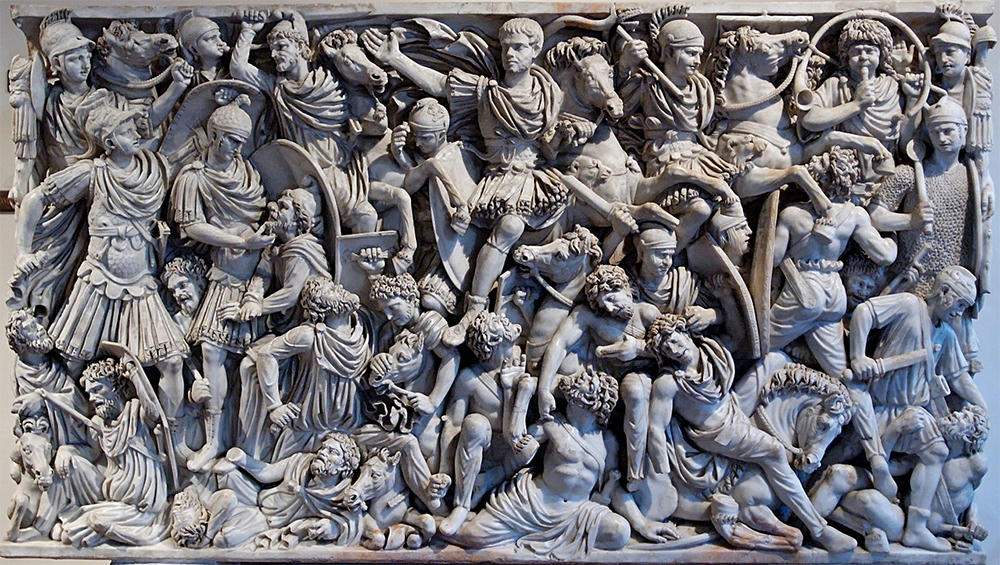|
Asignment Five An Introduction to Rome Deadline, Oct. 22, 80 points
How did Rome achieve such military and political greatness?
The Great Ludovisi Sarcophagus, about 251 A.D.
Description Anthropologists teach us that humans migrated to the Americas from Asia through a land bridge that crossed what is now the Bering Sea. After arriving in North America, modern humans traveled south and eventually reached the southern parts of South America. Along the way, they left artifacts. Just how much survived the glacial ice sheets is not known, but what is known is that by the time the Europeans arrived in the Americas, complex and differing communities and nations covered the continents. In this assignment, we will take a very brief look at just what those people left and how they are viewed today. Objectives Students will identify and describe the key vocabulary words and essential questions relating to the peopling of the Americas.
Instructions See the printed assignment. The link to it is located in the upper right portion of this page. Essential questions 1. How do archaeologists and anthropologists view evidence about the ancient peopling of the Americas? What factors support their theories? 3. Explain the variety and lifestyles of the Natives in the Americas prior to the arrival of the Europeans. |
|
Links Printed files TBA Media files TBA Online files Click here to view the PowerPoint we used at the begnning of this unit. Click here to open a copy of the Roman timeline you received in class - except that this one is set for 8.5 x 11 printing. Here is the link to the video "What the Ancients Knew - Rome".
Sound files |
